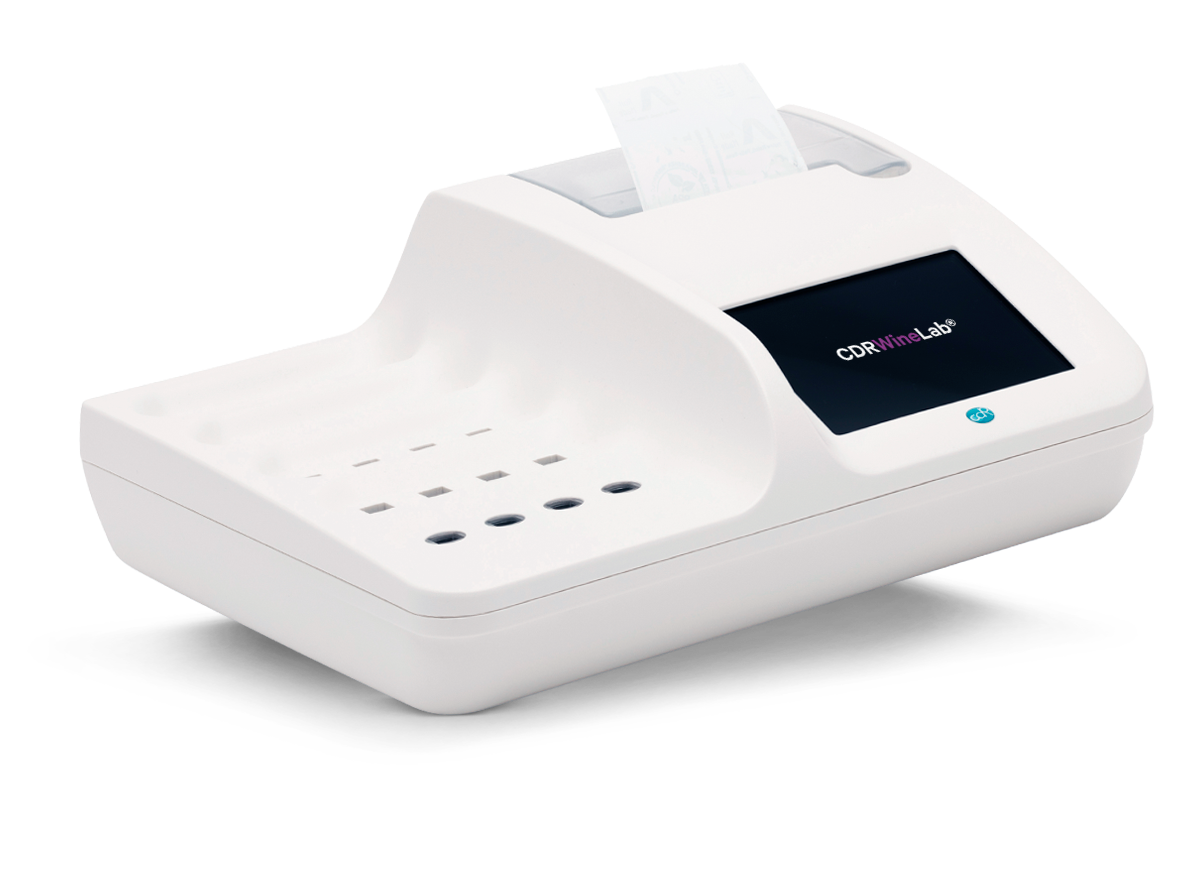Determination of Acetaldehyde (Ethanal) analysis in wine and must
Acetaldehyde is a by-product of yeast metabolism that is formed during alcoholic fermentation. Its formation depends on the fermentation conditions, including a too low fermentation rate. Acetaldehyde causes an organoleptic defect and it binds the SO2 causing a decrease in molecular SO2. Molecular SO2 is the form with antioxidant and antiseptic action in wine and must.
Method
Test type: End Point.
Time testing: 6 minutes.
Analysis sessions with multiple samples are possible up to a maximum of 16 tests for CDR WineLab® and 3 tests for CDR WineLab® Junior.
...
Sample treatment
Wine is analyzed as it is. If necessary (sparkling or fermenting wine), the sample shall be degassed using the specific ultrasonic bath (code 222062). In case of tests performed on must, the sample shall be centrifuged (code 222061) or filtered (code 300210).
Principle of the test
Acetaldehyde, in alkaline environment, is oxidized enzymatically to acetic acid with the consequent production of NADH. The increasing of the absorbance, measured at 366 nm in end-point, is proportional to the concentration of acetaldehyde in the sample.
Calibration curve
The calibration curve of CDR WineLab®, obtained using reference methods, potentiometric titration, confirms the excellent linearity of the system over the whole testing range.
...
Reagent test Kits
Measuring range
| Analyses | Measuring range | Resolution | Repeatability |
|---|---|---|---|
| Acetaldehyde (Ethanal) | 18 - 300 mg/L | 1 mg/L | 6 mg/L |
Analyzers for process and quality control in winemaking
CDR WineLab®
Complete analysis panel, supplied already configured
Up to 16 determinations simultaneously
Possibility of carrying out analyses of the same sample
Integrated printer
Full connections (LAN - USB - Bluetooth barcode/QR code reader)
CDR WineLab® Jr
Partial analysis panel, customisable configuration
Up to 3 determinations simultaneously
Wireless connection to external printer
USB connections
